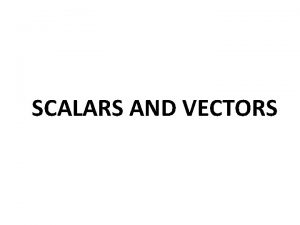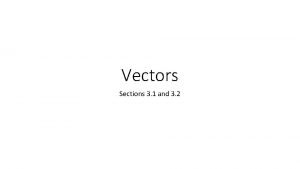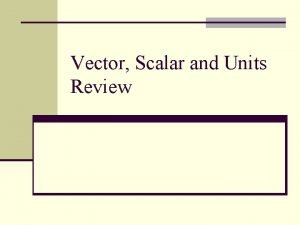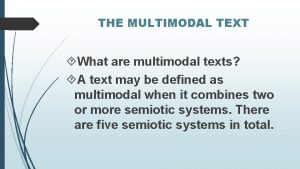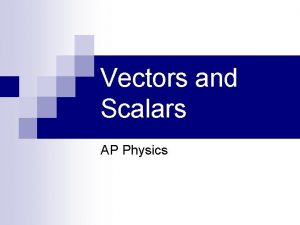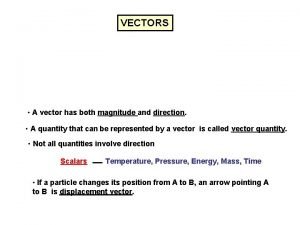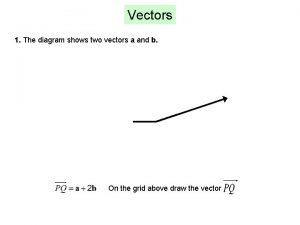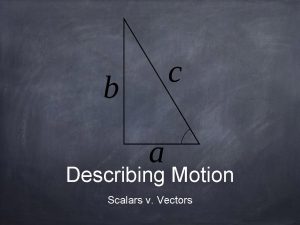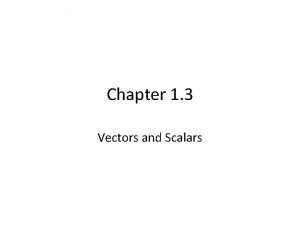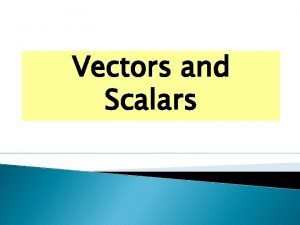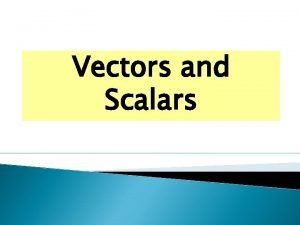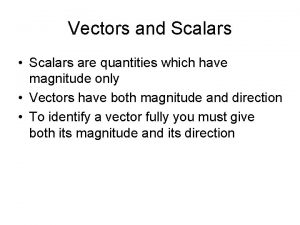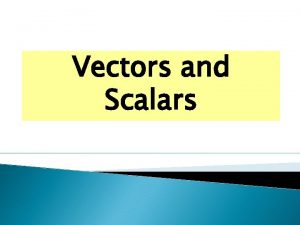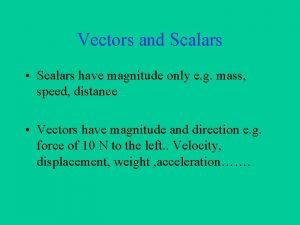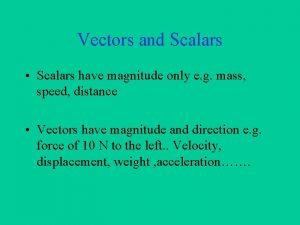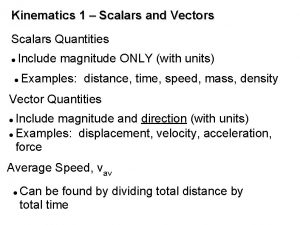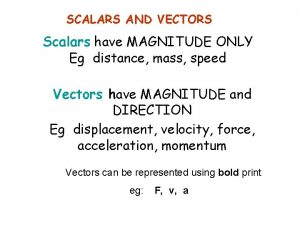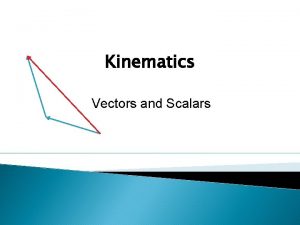INTRODUCTION TO VECTORS Scalars and Vectors VECTORS VS













- Slides: 13

INTRODUCTION TO VECTORS Scalars and Vectors

VECTORS VS SCALARS Scalars- A physical quantity that has only magnitude but no direction. Ex. include volume, speed, and distance. Vectors- A physical quantity that has both a magnitude & a direction. Ex. include force, velocity, and displacement.

MAGNITUDE AND DIRECTION • Magnitude is a Size or Number • Represented by the length of an arrow • Directions such as North, South, East, and West can be represented mathematically using degrees. • Direction arrow points • Component – Pieces or parts

REFERENCE FRAME Frame of Referenece - A system used to describe the position and movement of an object in relation to other objects. I. O. W – Point of view § I. e. From your R. F. you are not moving, but from the R. F. of the moon you are moving. § Are car driving past you at 70 mph appears to drive by very fast. However when you are in a car going 70 mph, the car next to you seems to stand still

PROPERTIES OF VECTORS Vectors can be added in any order. Add components in the same direction. Subtract components in opposing directions Multiplying or dividing vectors by scalars still results in vectors.

METHODS OF ADDING VECTORS VECTOR RESOLUTION Parallelogram Method Pythagorean Theorem (Head to Tail) Combine the components (Pieces) to find the resultant

VECTORS CAN BE ADDED IN ANY ORDER

PYTHAGOREAN THEOREM c 2 = a 2 + b 2 (hypotenuse)2 = (adjacent)2 + (opposite)2 r 2 = x 2 + y 2 (resultant)2 = (∆x)2 + (∆y)2

“HEAD TO TAIL” METHOD OF VECTOR ADDITION Let’s Practice (Draw the resultant vector): A B C

THE PLANE AND THE WIND

THE RIVER BOAT

Lets Practice 3 m 1 m 4 m 1 m This time we are going to use the table method to determine the resultant? r 2 = x 2 + y 2 X 1 2 3 4 Total Y

Wrap up 1. What is the difference between a scalar and vector quantity? 2. A long arrow indicates a larger ______? 3. Does it matter how anyone adds vectors together? 4. What are three vector quantities we use in physics? Below is the path a student takes to school. Determine the distance and displacement the student traveled. (Not drawn to scale) 3 M 3 m 2 m 2 m
 A storm system moves 5000 km due east
A storm system moves 5000 km due east Is 5m a vector or scalar
Is 5m a vector or scalar Similarity between vector and scalar
Similarity between vector and scalar Entropy is scalar or vector
Entropy is scalar or vector Lesson plan on vectors and scalars
Lesson plan on vectors and scalars Multiplying or dividing vectors by scalars results in
Multiplying or dividing vectors by scalars results in Magnetic field intensity is scalar or vector
Magnetic field intensity is scalar or vector Extension of scalars
Extension of scalars The multimodal text big ed mona
The multimodal text big ed mona Directed line segment definition geometry
Directed line segment definition geometry Monia
Monia Vector has both magnitude and direction
Vector has both magnitude and direction The diagram shows a hexagon abcdef
The diagram shows a hexagon abcdef 2d motion equations
2d motion equations



